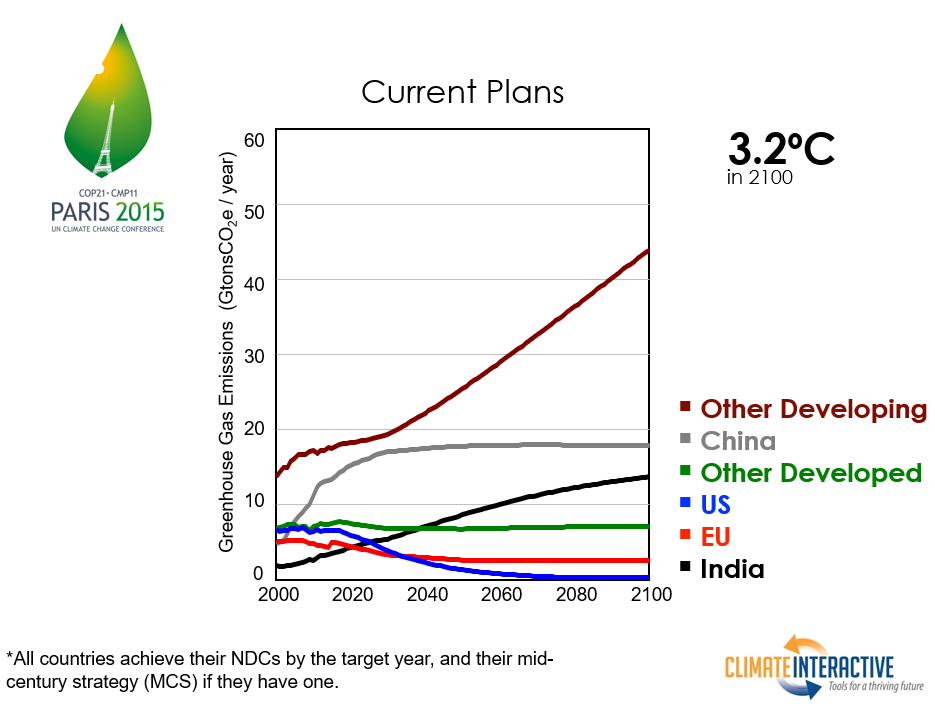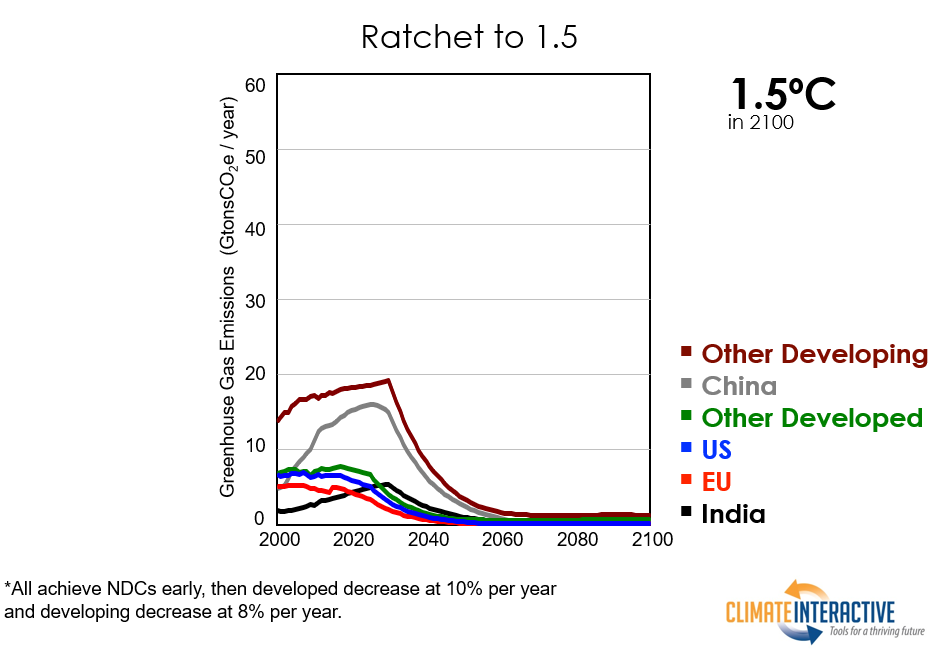Catastrophic Pledges
- 5 mins"In our view, climate change will determine the destiny of mankind, so it is imperative that our generation makes the right choices" was the words that the Chinese Foreign Minister Wang Yi used following the G20 meeting in Osaka last month. In this meeting, these nations (excluding the USA, which has formally withdrawn from the Paris accord under Trump) agreed to strengthen upon the agreements made last year in Argentina towards Paris 2015 targets. The current target is limiting to a 2°C rise of global mean surface temperatures compared to pre-industrial age levels. The consequences of a temperature rise above this limit are post-apolyptic. Our current trends (or Business as Usual) show that we are going to exceed this limit around 2045 (and exceeding 1.5°C around 2032) [1]. This corresponds to a greater than 0.5m sea level rise (with ~145 million people living within 1m of mean high water with 70% in Asia, Anthoff et al. 2016), potentially 1/3rd of species being committed to extinction, 90% coral reef bleaching, decrease in production of crops, severe reductions in fresh water supplies and further committed irreversibal warming of the earth [1].

Yearly global temperature anomaly ( https://www.climatecentral.org/gallery/graphics/2019-warming-stripes-how-temperatures-have-trended-in-your-region)
The first week of the four week "Transalpine" Climate-KIC Journey was designed to highlight the nature of the problem that climate change poses to humanity and planet earth. The Climate-KIC Journey is the world's largest summer school on climate innovation and is a programme of the EU and European Institute of Technology. One of the questions debated during this week between us (the majority of participants are students studying in the area of sustainability within European Institutions) was whether we can even solve climate change in the time we have. The climate change negotiation game was one of the activities that was used to highlight the urgency of the problem. Developed by Climate Interactive ( https://croadsworldclimate.climateinteractive.org/), in this game we played in teams representing blocs of the world at the UN climate panel negotiations. Our group was assigned to represent the "Other developing world", essentially developing countries excluding China and India (which were seperate blocks). Other blocs were the EU, USA and "Other developed world". The aim is to reduce global warming to 2°C by 2100 through emissions reduction pledges and agree on deals to share the costs of mitigation through the Green Climate Fund (GCF) to assist the most vulnerable nations. There are three rounds of negotiation with the model used to predict the temperature rise arising from the pledges made (see the link above for the assumptions used by the model).
 Emissions Reduction Pledges from Paris 2015 Negotiations [1]
Emissions Reduction Pledges from Paris 2015 Negotiations [1] During the first and second round of negotiations, with blocs playing somewhat to character (Ahem USA), we managed to achieve a disappointing 2.7°C increase by 2100. This involved time being given to the developing countries to prioritise economic and wellbeing development before starting to peak and plateau carbon emissions. We first agreed to reach peak emissions by 2055 with reductions starting in 2065 with the rest of the world agreeing to peak between 2030 and 2055. A goal of 100 billion dollars was set as a target for the GCF to help assist the developing countries. Negotiations were fierce with "Other Developing" and the EU offering only 30 billion dollars with the USA imposing conditions on their pledge based on China and their commitments. Tensions were rife between certain Blocs. During the final round of negotiations, unity between the countries in our block and the realisation that it was make or break for some of our countries led to more ambitious peaking dates and emissions reduction rates. Pleas from us were eventually answered under the pressure of the last round of negotiations with the USA, EU, "Other Developed" and China all contributing to make up 100 billion for the GCF. Even with what we thought were massive improvements to the pledges, the final temperature increase we managed as a group was 2.6°C. Basically irreversible warming with catastrophic consequences.
So what kind of reductions are required to hit the 1.5°C degree target? The reality is that we should have been reducing emissions yesterday. Every day that emissions are not reduced, even more drastic reductions are required tomorrow. The graph below shows the emissions trajectory required from the world with only China, India and the rest of the developing world allowed some leeway before having to start reducing emissions. It is worth scrolling upwards and downwards to soak in the differences. The drop required seems herculean given our current trajectories. The biggest difference we see between current trajectories and that required is in the emissions of "Other Developing" countries, China and India. These countries have a huge part to play in shaping how our future is going to look like. The issue of climate justice is inseperable when talking about mitigation and adaption. This also turns out to be the area that our project in the Journey is focusing on so expect more on this soon!
 Emissions Reduction Trajectories Required to limit to 1.5°C increase in mean global surface temperature [1]
Emissions Reduction Trajectories Required to limit to 1.5°C increase in mean global surface temperature [1] It was a bit sobering that even as a group of students who are relatively knowledgeable about climate change that we failed to reach a deal resulting in a temperature increase of less than 2°C. This was of course simulated in an environment without many of the political, historical, economic and social issues that accompany any discussions in actual climate change negotiations between nations. Our class was split in half; half used to the grim reality, half purely shocked and depressed. So can we as humans manage the most impressive comeback in eternity? As I've heard many a time this week and as often attributed to Lincoln, "the best way to predict the future is to create it". And what we create may still be in our hands.
